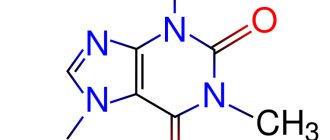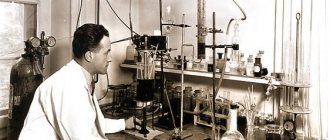Instant coffee was created in Britain at the end of the 18th century. for the needs of the army. The drink could be easily prepared on the field, but the taste did not please the soldiers. Scientists from different countries have been working to improve the technology for almost 200 years. The method of industrial production of coffee concentrate was invented by the English scientist George Constant Louis Washington in 1906, and since then the product has been popular all over the world.
Instant coffee matches the fast pace of modern life. Despite its wide distribution, the product is surrounded by an aura of mystery; its composition and origin give rise to controversy. The substance causes distrust and suspicion even among those who daily pour granulated coffee or powder into a cup to prepare a drink. You can dispel doubts and find out the truth by learning how instant coffee is made in factories.
What is instant coffee made from?
Consumers do not understand where the product comes from: coffee beans, waste collected from coffee plantations, or chemical mixtures. When talking about how and from what instant coffee is made in factories, manufacturers do not hide the truth. Speculation comes from ignorance. The truth is that the essence of the production of instant drinks is the deep processing of natural coffee beans.
Factories purchase batches of green coffee of the industrial Robusta variety. It contains little sugar and lipids, but is high in caffeine and chlorogenic acids, which have antioxidant properties. The variety is suitable for complex processing. But a soluble product is not made from robusta alone: due to the increased caffeine content, the drink becomes bitter, and subtle nuances of taste disappear.
How does it affect the nervous system?
Drinking instant coffee helps increase brain activity by an average of 10%, thanks to the natural psycho-stimulant caffeine it contains. The ingredient provokes the dilation of blood vessels in the brain, which significantly accelerates blood circulation and some biochemical processes.
Accelerating the transmission of nerve impulses through neurons increases nervous excitability and, as a result, causes cheerfulness, energy, and increased attentiveness.
The benefits of the drink are undeniable during intense mental activity, long-term driving, as well as for people over 50 years of age. It helps to increase attention and reaction, stress resistance and performance. Can improve mood and eliminate depression (due to the property of the product to stimulate the production of serotonin, the “happiness hormone” in the body).
The property of the drink to relieve headaches (except for pain due to hypertension) is a scientifically proven fact.
However, an overdose can lead to nervous exhaustion and overexcitation, tremors of the limbs and other unpleasant symptoms. In addition, the emergence of addiction, which is similar in strength to alcohol or nicotine, requires a careful approach to the amount of drink consumed.
Additional Additives
Each type of Arabica, depending on where it is grown, has a different flavor: nutty, berry, citrus. The base of the future drink is obtained by mixing robusta and arabica. The mixture improves the taste and reduces the cost of coffee. When instant coffee is produced in factories, at the final stage of the process they add:
- Sahara;
- carbohydrates;
- flavorings.
Additives make the taste brighter and improve solubility.
The process of making instant coffee is mechanized. Sometimes undesirable components accidentally get into the raw materials: pieces of branches, leaves, husks. This clogs the overall mass, reduces the quality of the product, and fragments of coffee husks increase the sugar content. Some manufacturers add acorn powder, barley, and oats to the composition. This results in a cheap drink whose taste is more like oatmeal.
Some facts about health benefits
Moderate consumption of coffee has positive health effects:
- stimulates the central nervous system;
- activates brain function;
- stimulates muscle activity;
- increases the tone of muscle tissue;
- reduces stress levels and improves mood;
- activates metabolism;
- reduces appetite;
- improves digestion;
- normalizes microflora in the oral cavity and intestines;
- enhances the effect of antibacterial and painkillers;
- reduce the risk of developing Alzheimer's disease;
- has an antiallergic effect;
prevents and inhibits the development of cancer cells.
Production technology
Industrial production of instant coffee is a labor-intensive multi-stage process consisting of the following stages.
Roasting grain
Instant coffee is made from roasted beans. Before frying, the raw materials are processed: they are cleaned and sorted. The product is fried in roasters for 15 minutes under vacuum or with air access. The chocolate shade obtained during roasting is a sign of caramelization of the sugar contained in the fruit. The darker the beans, the stronger the strength, richness and bitterness of the drink. The main thing is to ensure that the grains do not char: a burning smell is a sign of a damaged product. After roasting, the raw materials are sent to storage silos for 3–4 hours. This is done to ensure uniform distribution of aroma and drying.
Grinding
Dry beans are crushed in industrial coffee grinders. With the help of mills, different types of grinding are quickly obtained. To produce instant coffee, medium-sized grain fragments are used: this makes extraction easier with hot water.
Extraction and separation of coffee solids
The crushed beans enter special installations - extraction batteries, similar to giant coffee makers. There, boiling water flows under high pressure, washing away the active components from the particles of ground coffee. The extracted concentrated extract is cooled and filtered. The substance contains up to 40% solids. Aromatic compounds quickly evaporate.
Evaporation and final drying
The extract is sent to an evaporation unit to remove excess liquid. Final drying is carried out in two ways:
- evaporation (dry spray, Spray-Dry): the concentrated extract is placed in a spray column and, under the influence of steam, quickly becomes a dry powder. During steam treatment, further transformation of the powder and production of granules (agglomerate) is possible.
- By freezing the extract (dehydration, Freeze-Dry): the coffee extract is first frozen and then ground. Excess liquid is removed from the resulting granules in a sublimator under vacuum.
Each manufacturer, focusing on its own equipment, chooses a method that it considers optimal.
This is how coffee concentrate is produced in large volumes. The properties of the final product depend on how accurately all stages have been completed.
What do coffee beans contain?
The chemical composition of coffee beans includes more than 1000 compounds of organic and inorganic origin. Most of the substances perform biological roles: they have a direct effect on the human body, act as precursors of other complexes, and participate in enzymatic reactions.
The types of compounds and their relative quantities depend on the type of coffee, the degree of maturity of the grain, and the stages of subsequent processing. Internal chemical interactions occur at the stages of production of the final product, leading to the destruction of some substances and the formation of new components.
Original coffee beans contain:
- alkaloids;
- organic acids;
- tannins;
- amino acids;
- carbohydrates;
- vegetable proteins;
- lipids;
- vitamins;
- microelements;
- macroelements.
Each group of compounds has its own meaning. Often the actions of the components turn out to be opposite, which introduces some contradictions in opinions about the effects of the product. The study of what coffee contains and in what proportions continues. Research is being carried out and attempts are being made to artificially synthesize the unique complexes contained in coffee.
Types of instant coffee
Depending on the method used to dry the substance, the following types of instant coffee are distinguished:
- powder (spray-dried) - the cheapest type;
- granular (agglomerated), dissolves faster than powder;
- sublimated (freeze-dried, frozen) - the most expensive type, during the production of which the chemical elements contained in coffee beans (iron, phosphorus, nitrogen, calcium, sodium) are preserved.
All product variants are distributed. Coffee lovers notice that granulated coffee looks more appetizing than powdered coffee; the granules dissolve better without leaving a residue on the walls of the cup. The drink is often produced by freezing: the aroma of the invigorating drink is preserved in shiny, smooth granules.
How does it affect the digestive organs?
The product contains organic acids (malic, citric, oxalic, chlorogenic, etc.), which stimulate the production of gastric secretions, which in turn accelerates the digestion process. This property is positive, however, in the presence of stomach ulcers, gastritis, pancreatitis and other diseases, it can lead to their exacerbation.
In case of alcohol abuse, coffee prevents the occurrence of cirrhosis. The tannins contained in the product saturate the body with vitamin P and activate metabolic processes with the participation of vitamin C. The tannin properties of tannins allow the coffee drink to be used to treat gastric ulcers. Tannins impart a bitter taste to the drink, which can be eliminated by drinking coffee with milk.
Pros and cons of instant coffee
Differing from the natural product, instant coffee is endowed with advantages and disadvantages. The advantages are due to the production technology. These include:
- long shelf life - up to two years (during this time, natural coffee loses its aroma due to the evaporation of essential oils);
- speed and ease of preparation (no additional unit is required to make a drink);
- economical use: to prepare a cup of instant drink, you will need 2 g of product, and to brew espresso, you will need 5 times more ground beans;
- ease of transportation and storage.
The instant version is inferior to the ground version in terms of brightness of taste and subtlety of aroma. To mitigate the shortcomings, expensive instant coffee is made with the addition of coffee oils or ground particles. The product is hygroscopic, the jar with it should be quickly closed after use.
A 250 ml cup of instant coffee contains up to 150 mg of caffeine. Some consumers view the low content of the substance as an advantage, others – as a disadvantage. Stores sell a drink that contains no caffeine at all. The product is made using carbon filters through which a rich extract of green coffee beans is passed.
The product cannot be called an exclusively synthetic substance: the extract is extracted from the fruits of the coffee tree. Instant coffee is created under intense pressure and elevated temperature. Because of this, beneficial substances and smell are lost, which are replenished with preservatives, flavors and stabilizers. Using new technologies, manufacturers make the concentrated extract similar to the natural version.
A little history
There are several versions of who invented instant coffee. According to the most common theory, it was first made by the ethnic Japanese Satori Kato, a scientist who worked in Chicago. He registered the patent in 1901. And earlier, in 1890, a similar invention was patented by David Strang from New Zealand. The English magazine New Scientist attributes the discovery to the British army. The modified product was actually mentioned as early as the mid-19th century. The British made long-lasting cast coffee bars, convenient for brewing on the go. The pressed mixture was included in the army rations. In the United States, dry coffee only gained popularity during the Civil War (since 1861). “Coffee bars” were provided to the army of the northerners.
At the beginning of the 20th century, primitive technologies began to improve. Ludwig Roselius in 1903 figured out how to reduce the caffeine content. And in 1906, Englishman George Q. Washington created the first instant coffee for widespread consumption. Despite its questionable taste, his Red E Coffee label held a monopoly until 1938.
- Don't miss: Which coffee is better to drink - instant, ground or beans
It was then, due to overproduction, that Brazil began to look for a way to store excess supplies. Chemists from the Swiss company Nestle came to the aid of the government, creating the first real instant coffee. This is how the Nescafe brand appeared, which soon gained worldwide popularity.











